To learn about the history and works of Shambhala Archives, select from these past projects and exhibits.
Khyentse Foundation Scholarship Recipient
2018
In 2018, Khyentse Foundation scholarship recipient Matilda (Tillie) Perks spent time at the Shambhala Archives to develop her graduate work on the poetry of Chogyam Trungpa Rinpoche.
Watch the video for her reflections on the work to date and the impact the Khyentse Foundation scholarship has had on her studies.
Parinirvana Exhibit
April 4 2009
This year Shambhala Archives was able to present several objects from the Surmang Relics. Great care was taken to ensure their safety during the one day exhibit with the help of a secure display case lent by St. Mary’s Art Gallery and the continuous presence of Kasung.
These precious objects were hand carried by Chogyam Trungpa Rinpoche when he left Tibet in 1959. They were first displayed for many years on the main shrine of the Boulder Shambhala Center . In 1987 they were brought to Halifax at the request of Sakyong Mipham Rinpoche.
The Archives would like to permanently install the Surmang relics in the shrine room of the Halifax Shambhala Center but must first design the proper climate controlled secure display case.
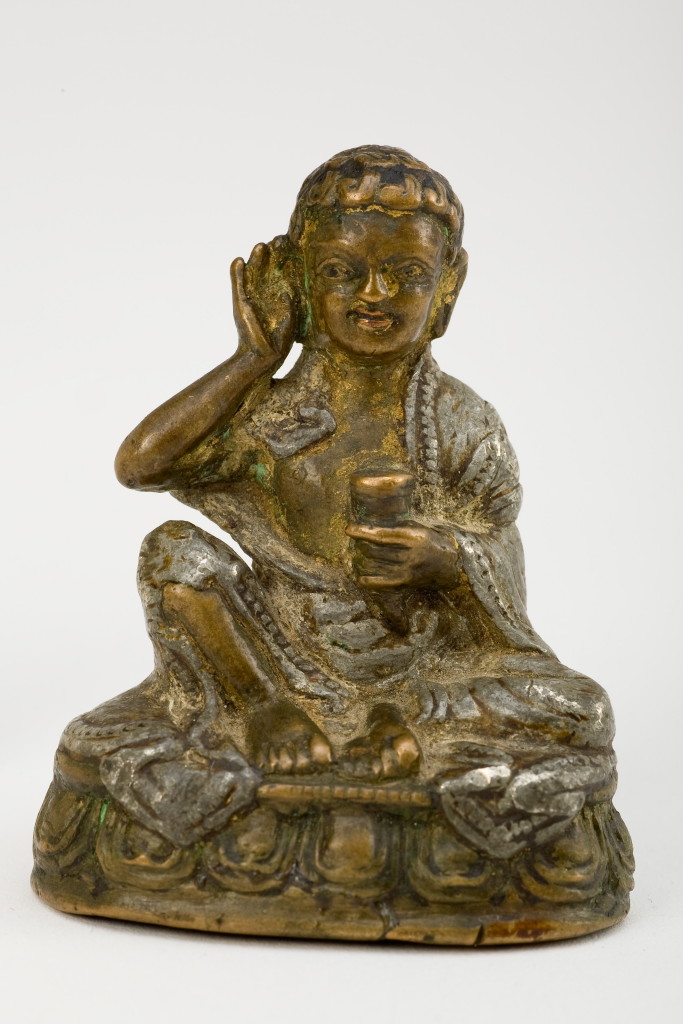
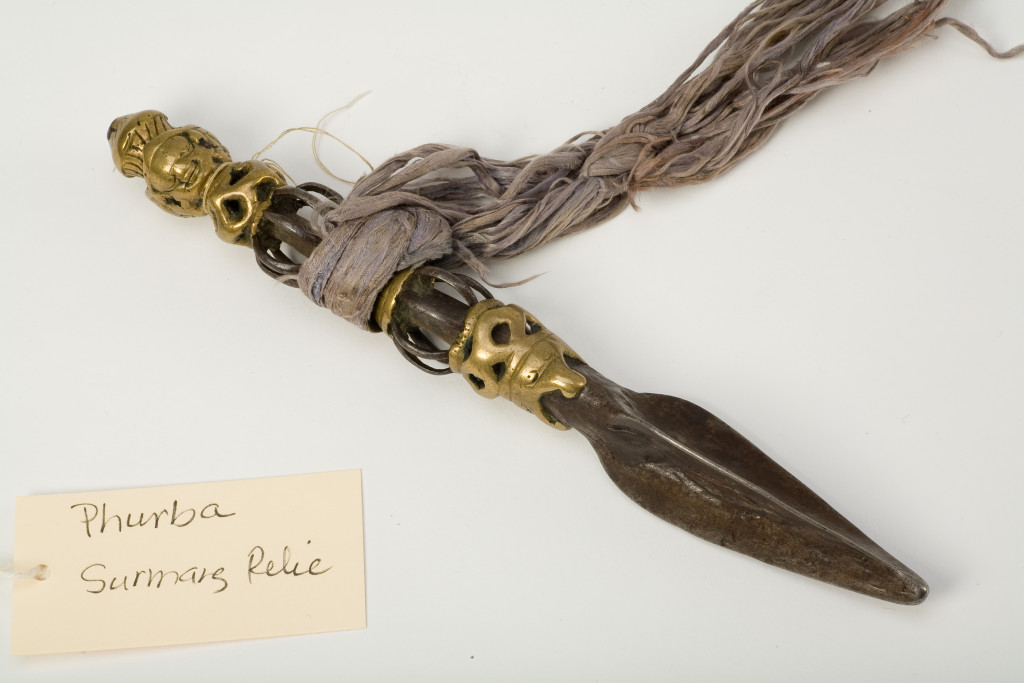
The objects displayed on April 4 were the three sided dagger of meteoric iron and bronze that was used by Padmasambhava (circa 750-800); a 12th century hooked knife of meteoric iron and bronze that belonged to Naropa; the rupa of Milarepa, of bronze ,silver and copper, Tibetan, 12th century, that belonged to Gampopa; the rupa of Chakrasamvara, 11th century shrine object belonging to Naropa; and the four-armed Mahakala, the main protector of the Surmang monastaries. It is this rupa from which the large Mahakala rupa at the Great Stupa of Dharmakaya was based upon.
On this day, Jeanne Riordan curated a larger exhibit in the A-Suite of the Halifax Shambhala Center. She created a wonderful personal display of several aspects of the Vidyadhara’s life.
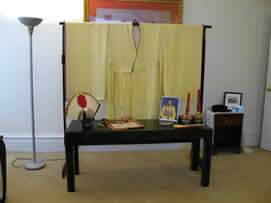

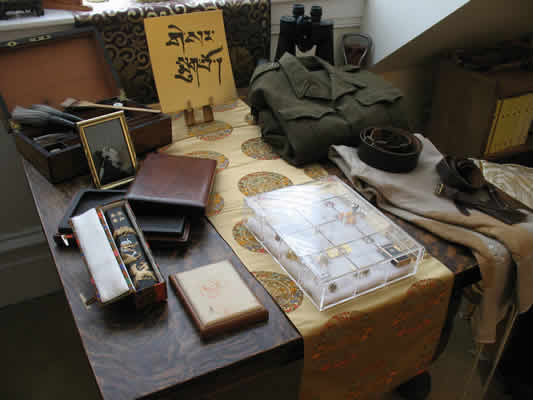
25th Anniversary Parinirvana of Trungpa Rinpoche
2012
This year marks the 25th Anniversary of the Parinirvana (death) of the Vidyadhara, Chögyam Trungpa Rinpoche, the founder of our Shambhala community.
This seminar, on The Sadhana of Mahamudra, presents the principle of the teacher in the teacher’s own words. It reminds us of the brilliance and profundity that are the foundation of the Shambhala lineage. As the Vidyadhara states in this talk: the relationship between student and teacher is like a dance.
“The Teacher” – from The Sadhana of Mahamudra Seminar, November 1975, Boulder, Colorado
Brush and Sword Exhibit
Brush and Sword Exhibit
April 4, 2007
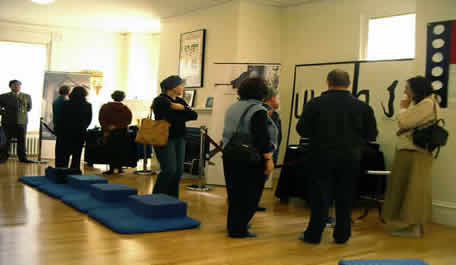
An exhibit “Brush and Sword”commemorating the 2oth Aniversary of the Parinirvana of Chögyam Trungpa took place in Halifax, Nova Scotia at the Halifax Shambhala Center April 4, 2007. Three themes were selected for this exhibit: Calligraphy, Ikebana and the Sakyong Empowerment. The Shambhala Shrine, which had been incorporated into the exhibit, resides permanently in the Snow Lion Room ,where the display took place.
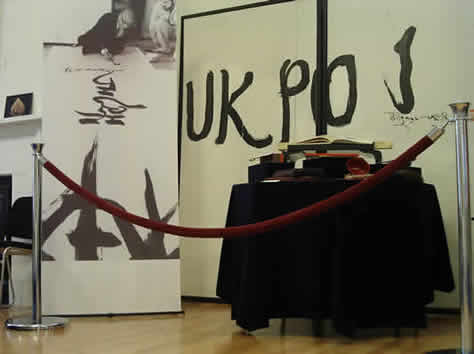
Chögyam Trungpa ‘s interest in art began in Tibet. In India he completed several powerful paintings in the tradition of Tibetan thangka painting, and he also began to create small dharma art arrangements of objects. In England, he began to do some paintings with brush and ink. However, it was in North America that this activity blossomed. Trungpa Rinpoche created several thousand calligraphies using Japanese sumi ink, on white paper, but occasionally on gold paper or other backgrounds. Several of his calligraphies were included in this exhibit, and several others are still on display in other rooms in the center.
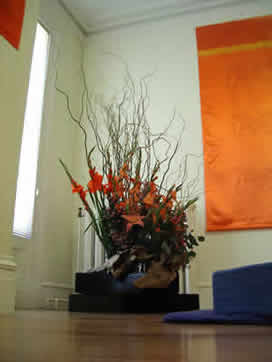
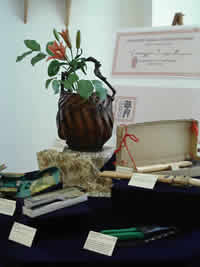
Chögyam Trungpa studied ikebana in England with Stella Coe, with whom he maintained a close relationship for many years. He received certification in the Sogestsu School and an enlargement of this certificate along with some of his tools were displayed in this exhibit.The one large ikebana arrangement pictured here was created by senior students of his, who still continue to train in the discippline of ikebana, inspired by his example. In the 1980’s a group of students practicing ikebana formed Kalapa Ikebana to study and practice the art of flower arrangement.
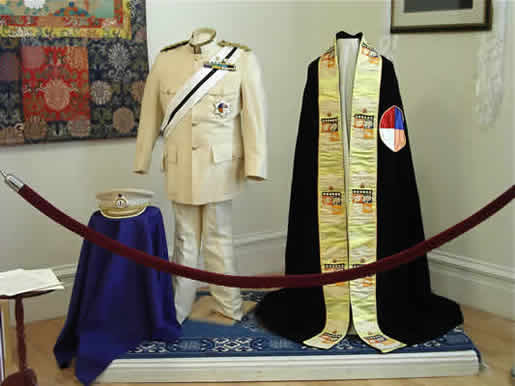
A DVD of parts of the abhisheka were shown as part of the exhibit. It showed the very ceremonial way in which clothing and medals were presented to Trugpa Rinpoche. Many of the actual medals and ceremonial awards were displayed in this exhibit.
A smaller exhibit was later installed in “A” suite for guests to view following the weekend Parinirvana events held at the Center.
VCTR Collection Photography
February 2009
On the weekend of February 7th Archives supporters, staff and volunteers along with photographer Marvin Moore set up a small photo studio in the Tiger Room at the Halifax Shambhala Center to continue documenting the personal belongings of the Vidyadhara.
This was the third session and much was accomplished including re-photographing the precious Surmang Relics which the Vidyadhara brought with him when he escaped from Tibet.
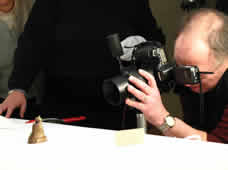
To our pleasant surprise Carolyn Gimian discovered markings on the back of what was believed to be Naropa’s scull, markings that very much resembled the AH symbol.
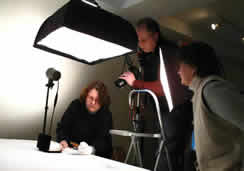
Marvin Moore Photography
Speech Empowerment of the Great Stupa of Dharmakaya
July 20 2008
On this day, 3000 CDs containing all of the talks that Trungpa Rinpoche gave during his 17 years in North America were installed in the Great Stupa of Dharmakaya.
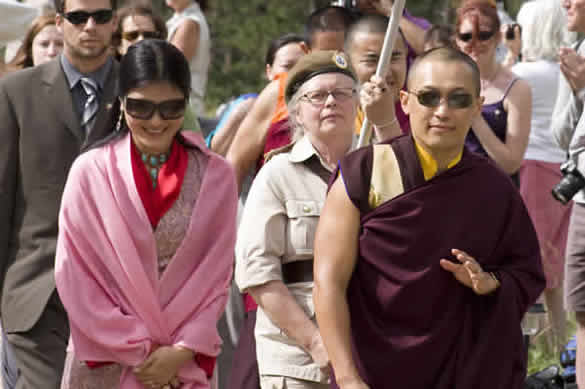
Sandra Kipis Photography
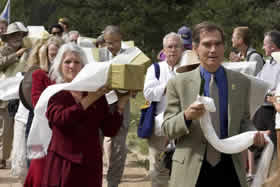
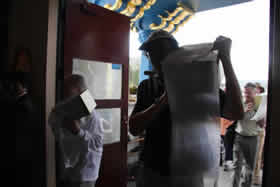
Sandra Kipis Photograph
Great Eastern Sun: The Shambhala Community in Nova Scotia
2012
This exhibit was developed in partnership between the Canadian Museum of Immigration at Pier 21 and the Halifax Shambhala Centre, the Shambhala Archives, and the Chogyam Trungpa Legacy Project.
Audio, Video, and Photo Projects and Requests
Fall 2011
Concentrating on these special projects:
- Digitizing, cataloging and re-housing the VCTR photography collection
- Improving the care of the Vidyadhara’s belongings in the Ladrang
- Conservation and display of the Surmang Relics
- Digitizing our video collection
Photographs
We have more than 50,000 images in our VCTR photography collection. We have begun to digitize and catalogue these photographs, but we have completed less than three percent of the collection.
This year, we received a direct request from His Holiness the 17th Gyalwa Karmapa to help select photos of the 16th Karmapa from our archives, for an exhibit in Bodhgaya honoring the 900th anniversary of the Karmapa lineage
.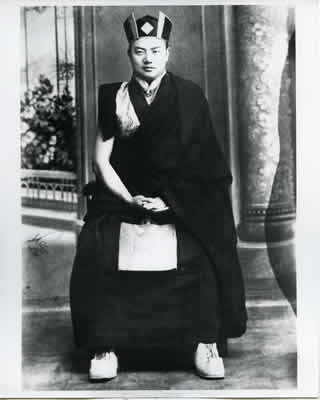
After completing this pilot project we are ready to move forward with other parts of the collection.
A generous donor provided funding for a new computer dedicated to the photography collection. As part of the preservation process, we need a scanner that will give us better quality high resolution scans.
Eventually many of these photographs will be uploaded to a site that we have already created to be seen and enjoyed by all.
You can visit this site by clicking here.
Continuing Commitment to Our Vast Audio-Visual Collection
The Shambhala Archives has continued the archival migration of audio and video of teachings that are in our vault. We have more than 1,000 hours of analog video that need to be migrated or digitized and stored on secure hard drives and data tapes.
Your donations continue to support this necessary work.
Last year Gordon Kidd worked on the digital migration of analog videos such as:
- Skillful Means and Wisdom (1976) – also released as a DVD set this year
- The Iconography of Buddhist Tantra (1975)
- The Dance of Enlightenment Aesthetics seminar, (1975)
- Visual Dharma, (1978)
- Creating Enlightened Society, (1982)
The Archives also accessioned recent talks of Sakyong Mipham Rinpoche of the Scorpion Seal programs and the Vajrayana Seminaries of 2009 and 2010. An important part of our mandate is to archive and preserve both audio and video teachings by the Saykyong.
Video Digitization and Restoration
2015
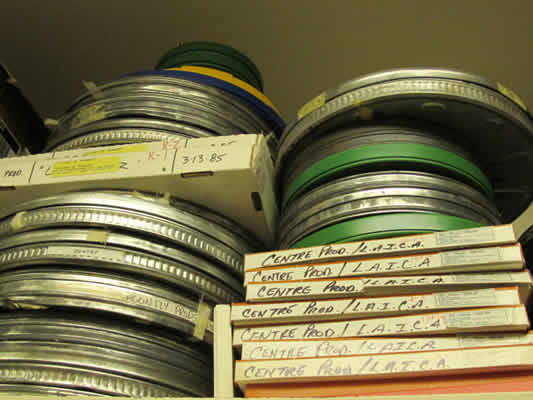
Video Holdings-Then And Now
The Shambhala Archives houses more than 2,500 video tapes that date from 1973 to the present.
Further accruals from Kalapa Recordings and Shambhala International are ongoing.
The history of the Shambhala Archives’ video collection parallels fairly closely that of our audio collection. The focus is consistently on recording the teachings of Trungpa Rinpoche, Sakyong Mipham Rinpoche and other important teachers to our lineage.
A significant number of the earliest tapes in our possession were re-mastered in our Video Recovery Project, mounted from 1992 to 1994
Digital Migration of Early Video Formats
As video technology has moved on to digital formats, the need to migrate all early analog video to digital video is critical. Since 2009 the Archives, with funding from the Shambhala Trust, began to carry out digital preservation of 500 hours of video recordings of the Vidyadhara the Venerable Chögyam Trungpa Rinpoche.
The Archives purchased hard drive storage capacity on a RAID 5 storage device, and more than half of the early video, esp. that of VCTR, is now stored on the RAID, known as VAJRADHATU. Of these digitized tapes, editing, remastering and DVD authoring have made access possible for the Shambhala sangha and the general public (where applicable). As well, once digitized, the cost for future preservation migrations will be significantly lessened.
“RAID” is an umbrella term for computer data storage schemes that can divide and replicate data among multiple hard disk drives. Once data is on a RAID, security is assured as it can repair itself by rebuilding a failed drive from the data on the other drives. The platform we are using is very stable, industrial strength equipment, consistent with our practice of using professional grade technology in all of our preservation and production work.
More Recent Digital Recordings
Since the mid-2000s more and more recordings have been made with digital recording technology – and since 2009 all audio visual field acquisition has been “born digital”, that is, coming to us in digital formats from inception. Shambhala Media now provides a camera kit for all teachibng events; to ensure a high quality video record is made of all of his teachings. These files are stored on our RAID (see explanation of RAID storage systems, above)and backed up on at least one other server to ensure protection of the data.
Our Goal
Our goal this year is to complete digitization of all the Vidyadhara’s video in our collection. This totals 235 tapes that vary in length from twenty minutes to two hours each.
The material includes:
- Shambhala Training Level Five program, from Boulder in 1980 – requiring restoration work as well as transfer
- Videos of the only Chakrasamvara Abhisheka conducted by the Vidyadhara, including his tri, teaching and instruction, at the abhisheka
- Early Vajrayogini fiire pujas attended by the Vidyadhara
- Many early black and white seminars from Naropa, Shambhala Mountain Center and other locations
To support our work digitizing the remainder of the VCTR videos, please donate to the Archives.
Video Recovery Project
2010
Technical Paper by James Hoagland, Peter Hull, and Carolyn Gimian
This paper investigates new methods in the conservation and transfer of 1/2 inch Black-and-White open reel video tapes. It was written in 1995 in connection with the Shambhala Archives Video Recovery Project, during which over two hundred video tapes were recovered using the methods described below.
In the early 1980s, the Naropa Institute was about to discard the apparently useless, unplayable 1/2 in open reel videos in its possession, which numbered approximately 250. . The majority of these tapes were recorded in the 1970s at Naropa Institute, in Boulder, Colorado, with the help of a grant from the U.S. National Endowment for the Arts. Others were recorded and donated by several of Chögyam Trungpa’s students. The tapes were all recorded on the exceedingly fragile black and white 1/2 inch open reel video format, and had been stored in less than ideal conditions; as such, they were prime candidates for rehabilitation. Read more at the Video Recovery Project page.
Photo Path of Restoration
Photo Path of Restoration
Because the Shambhala Archives has 50,000 photographs of Chögyam Trungpa Rinpoche, Sakyong Mipham Rinpoche and other great dharma teachers. While a small number of these photos have been digitized (10–15%) and a smaller number have been restored the vast majority have not. It is essential that we begin the process of digitizing and restoring so that we do not lose these pictorial treasures.
Last year we fundraised so we could begin our video digitization and restoration project; a long term project that will go on for years. We are happy to tell you that we have made considerable progress on that path and are happy with our accomplishment so far.
You can watch the video Path of Restoration, which will help you visualize what it means to digitize and restore old videos. And you will see glimpses of our teachers.
Digital Migration Project
2009
Video technology has moved on – to digital formats, DVD authoring, and the need to migrate all early analog video to digital video. Digital preservation of all early analog video is a critical priority at this point.
This fall the Archives submitted a proposal to the Shambhala Trust to carry out digital preservation of 500 hours of video recordings of the Vidyadhara the Venerable Chögyam Trungpa Rinpoche.
The Archives has the equipment to play back and convert the video signal, all that is missing is the storage capacity. The request is to purchase hard drive storage capacity on a Raid 5 storage device. Once digitized, access to these teachings will increase, and the cost for future preservation migrations will be significantly lessened.
“RAID” is an umbrella term for computer data storage schemes that can divide and replicate data among multiple hard disk drives. Once data is on a Raid, security is assured as it can repair itself by rebuilding a failed drive from the data on the other drives The type of raid we are seeking is a Raid 5 device, a very stable, industrial strength configuration.
Audio Recovery Project Award
Audio Recovery Project Honoured with Award – June 11, 2010
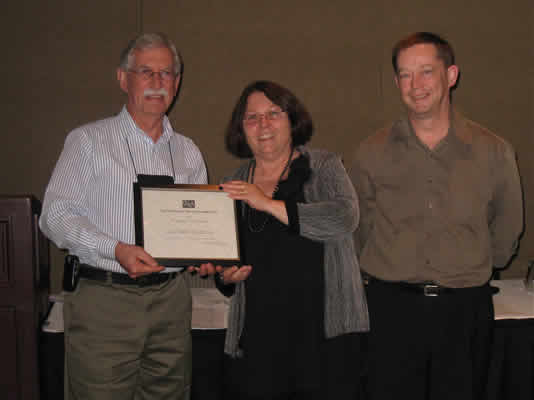
Carman Carroll, retired NS Provincial Archivist, presented the award to Carolyn Gimian and Gordon Kidd.
On June 11, 2010 the Shambhala Archives received the Carman V. Carroll Award for Outstanding Achievement in Archival Preservation from the Council of Nova Scotia Archives. The goal of the award is to foster an appreciation of preservation and recognize its place as a vital component within the ongoing daily operations of an archives. The Shambhala Archives received the award for the Audio Recovery Project to preserve and digitize the audio recordings of the Vidyadhara, the Venerable Chögyam Trungpa Rinpoche. The Archives is honoured to have received this award. Gordon Kidd, the Technical Director of the Archives, and Carolyn Gimian, Director Emeritus and Past President of the Council of Nova Scotia Archives, represented the Shambhala Archives at the awards ceremony.
The majority of the work was done over four years with a total budget of $250,000. Some initial research and trials were done in 2004 and 2005. The work commenced full time in 2006 and was completed in 2009. We hoped to finish in 2008, but needed an extra year to finish the project. While $250,000 is a lot of money, it was an extremely economical use of funds.
Gordon Kidd, the technical director of the Shambhala Archives contributed approx. ¼ time to the project. The Digital Engineer who worked with Gordon to design and implement the system was Chris Levy, who worked full time on the project for three years and worked ¼ time to complete the remainder of the project in the fourth year, 2009. The Archives Assistant, Sandra Kipis, worked on duplication and administration of the project. Several summer students also worked on the project through various grant programs. Carolyn Gimian helped to raise the funds for the project and communicated with the centres and sent them newsletters, updates etc. The staff of the Shambhala Archives showed tremendous dedication, tenaciousness and ingenuity in the implementation of this project.
Audio Recovery Project
2006
Project History –
written by Cynthia L. Cochran, May 1, 2006
photographs taken 2007-2008
The ARP was first proposed in 1996. The equipment and methodologies employed have evolved over the subsequent nine years as technological advances offered better solutions. All aspects of the digitization process have been, and continue to be, handled by SA staff, utilizing equipment purchased and funded by SA. Over these ten years, project protocols have included the use of a Sony PCM digital audiotape recorder to digitize and record to VHS videotapes; migrating to new analog reels and type IV metal cassette tapes; digitizing and recording to audio CD-Rs, DVD-Rs, and to hard drives, configured in a redundant array of inexpensive discs (RAID), which provide two terabytes of storage on a computer server (Levy, email to author, 24 April 2006).
Download the Audio Recovery Implementation Plan (Downloads a .pdf file on click).

In this video, view staff and volunteers engaged in activities of the Archives.
